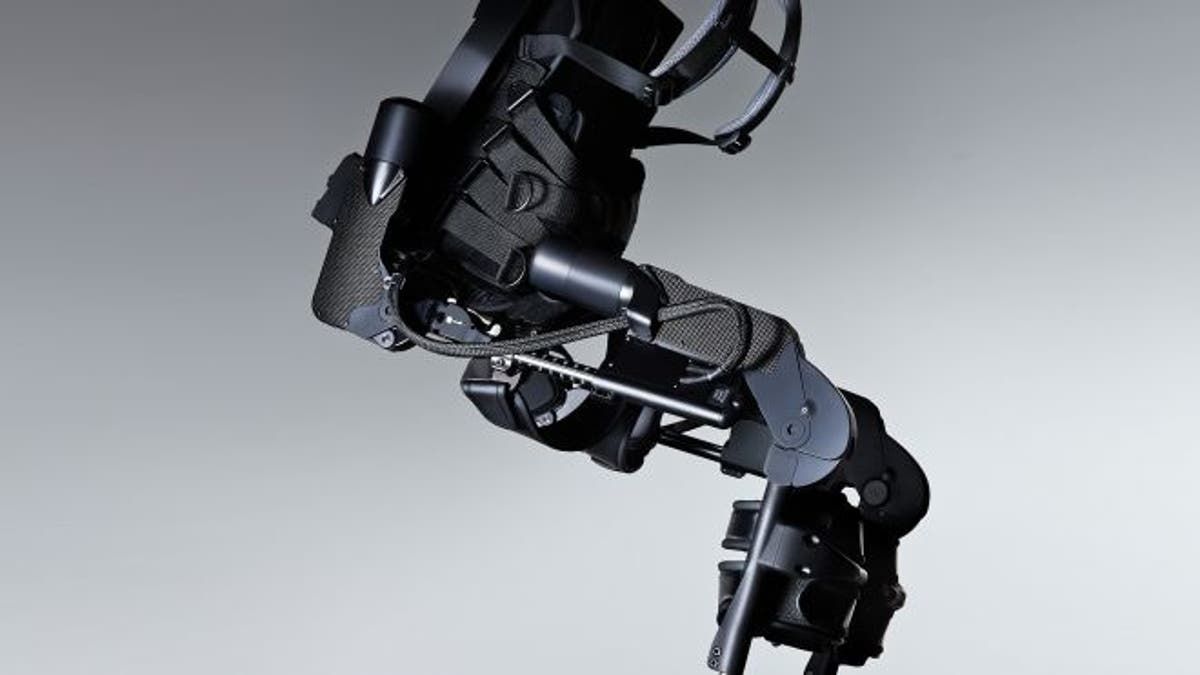
Ekso is worn over everyday clothes and can be put on and taken off in a few minutes with a bit of practice. (Source: Ekso Bionics)
Imagine being paralyzed from the chest down, due to a car accident -- and then suddenly being able to walk again.
And it's all thanks to something called an exoskeleton, a computer-controlled battery driven, 48-pound frame that you can move forward by simply pushing your arms.
This was a holiday present for Manny Maldonado, a 34-year-old patient at Mount Sinai Medical Center in New York, who is paralyzed, but is now back on his feet and smiling.
Related: Wearable robots help paralyzed warriors walk again
Developed by the military to allow soldiers to carry heavy weights long distances, then adapted to use with paralyzed patients, this real life "Iron Man" uses two lithium batteries, motors, computer chips and a hand-operated console.
It's available at 30 hospitals around the country so far, and with an immediate potential for home use, this friendly robot is a game changer.
Researchers at Vanderbilt University have developed the lightest model, under 30 pounds, and expect the uses and benefits of the exoskeleton to extend to patients with stroke and many other neurological conditions.
Health benefits include positive affects on the psyche, as you can tell from Maldonado's enthusiasm.
"It feels great,” he said. “Number one, I don't have to keep looking up at people. I'm back at eye level with them…It feels a lot better to breathe in. I began to sleep better at night, (the) spasms are decreased, (and I have) better bladder control…It's just a feeling of joy. You're back on your feet."
According to Dr. Kristan Ragnarrson, chairman of Rehabilitation Medicine at Mount Sinai, who is in charge of the exoskeleton program, the exoskeleton is good for the skin, muscles, bones, circulation, and it decreases the risk of blood clots and wounds.
Ragnarsson said years of research on chemicals and nerve growth factors for paralysis that have yet to bear fruit are now being eclipsed by this new dazzling technology. He added that one day this device may be operable by brain power in place of the computer console.
"I've been treating people with spinal cord injury for over 40 years," Ragnarsson said. “In the absence of a cure, I've been using technological devices to help them to gain mobility and to be able to better care for themselves. Now, we have this electrically powered robot where they actually can go distances without exhausting themselves. I think this is a new beginning.”
There is one downside, and that's the cost, which is up to $140,000 for a single unit.
But as more and more patients use it and the technology is simplified, the cost is expected to come down. The potential upside is huge, and units like this may one day soon be available for paralyzed patients everywhere, replacing many of the common uses of the wheelchair.



















